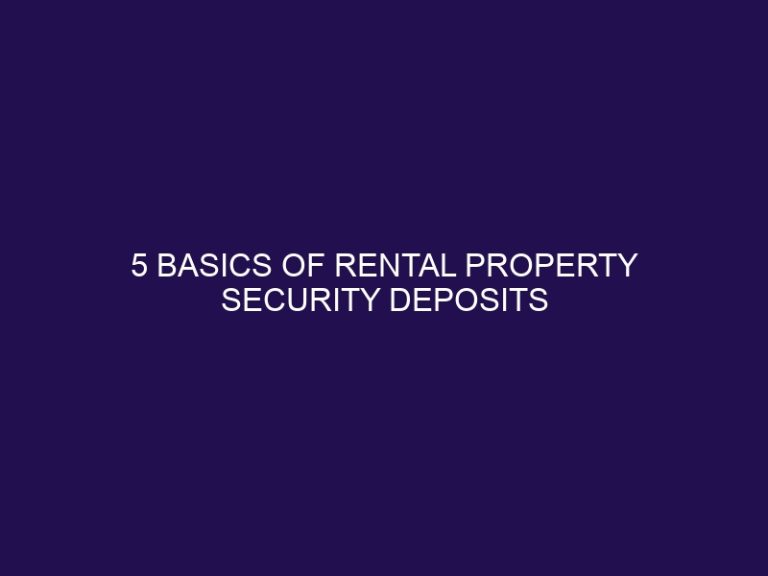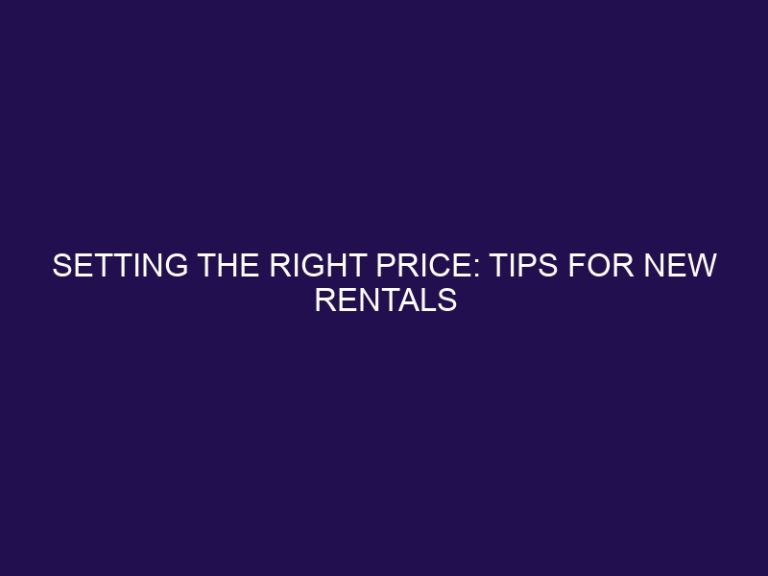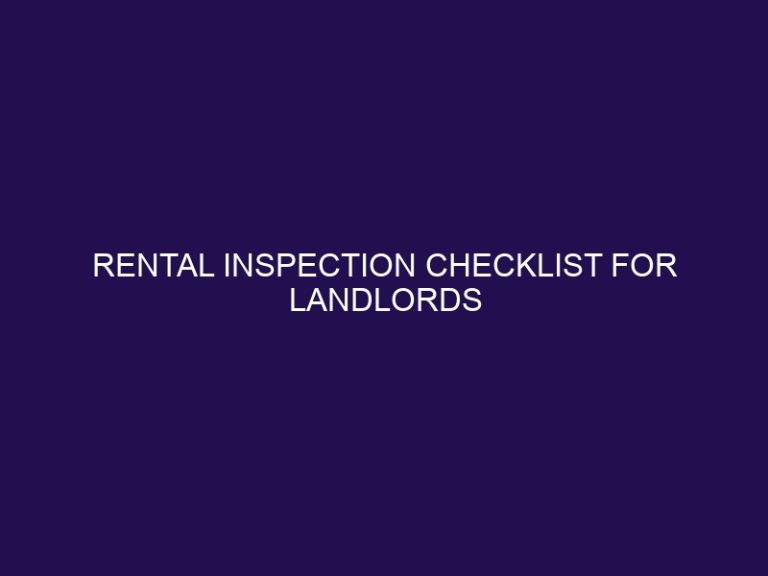Your Guide To Ontario Tenancy Forms
Understanding and navigating the various forms and agreements involved in Ontario tenancy is essential for both landlords and tenants. The Residential Tenancy Agreement serves as the foundation for the landlord-tenant relationship and outlines the rights and responsibilities of both parties. Exploring Ontario’s Standard Lease Agreement is also crucial, as it provides a standardized template for residential tenancies across the province. In addition to these agreements, there are several other important forms and documents that may be required throughout the tenancy process. Knowing how to properly fill out these forms is vital to ensure compliance and avoid any legal complications. This comprehensive guide will provide an overview of Ontario tenancy forms, including the Residential Tenancy Agreement, the Standard Lease Agreement, additional forms and documents, tips for completion, and reliable sources for obtaining these forms.
Understanding the Residential Tenancy Agreement
Understanding the residential tenancy agreement is crucial for both tenants and landlords in Ontario. This legally binding document outlines the rights and responsibilities of both parties, including rent payment terms, maintenance obligations, and lease duration. It is of utmost importance to carefully review and comprehend all terms and conditions before affixing your signature to the agreement. Should you require assistance, it is advisable to seek legal counsel in order to ensure a fair and transparent agreement. By comprehending the residential tenancy agreement, tenants can safeguard their rights and guarantee a positive renting experience.
In 2006, a groundbreaking residential tenancy agreement case in Ontario brought about significant changes in tenant rights. The court ruled in favor of the tenants, thereby highlighting the pivotal importance of clear and equitable lease agreements. This decision resulted in reforms that bolstered tenant protections and emphasized the imperative for landlords to provide secure and well-maintained rental properties. It constituted a critical stride towards establishing a more balanced and just renting environment in Ontario.
What is a Residential Tenancy Agreement?
A residential tenancy agreement, also known as a lease, is a legally binding contract between a landlord and a tenant. It serves as a formal document that outlines the terms and conditions of the rental arrangement. The agreement covers crucial aspects such as the amount of rent, the duration of the tenancy, and the responsibilities of both parties involved. By understanding and signing this agreement, both the landlord and tenant can ensure clarity and establish a fair and harmonious relationship.
The residential tenancy agreement provides protection for the rights and obligations of both the landlord and tenant. It includes details about payment arrangements, maintenance responsibilities, and conditions for terminating the tenancy. This agreement acts as a safeguard, ensuring that both parties are aware of their rights and responsibilities.
An example illustrates the importance of carefully reviewing and comprehending the terms of a residential tenancy agreement. In Ontario, a couple signed an agreement that lacked clarity regarding repair costs. This ambiguity resulted in conflicts and added financial burdens. Hence, it is crucial to thoroughly review and understand the terms before signing a residential tenancy agreement.
Overall, a residential tenancy agreement is a fundamental legal document that establishes the rights and responsibilities of both parties involved in a rental arrangement. It is essential for maintaining a clear and mutually beneficial relationship between the landlord and tenant.
Key Elements of a Residential Tenancy Agreement
A residential tenancy agreement is a legally binding contract between a landlord and a tenant that outlines the terms and conditions of the rental arrangement. Key Elements of a Residential Tenancy Agreement include:
- Names of parties involved: This includes the full legal names of both the landlord and the tenant.
- Property details: The address and a description of the rental property should be clearly stated.
- Term of the tenancy: This specifies the start and end dates of the tenancy agreement.
- Rent payment details: The amount of rent, due date, and acceptable payment methods should be specified.
- Deposit and fees: Any security deposit or additional fees should be clearly stated.
- Rules and regulations: Any specific rules and regulations for the property should be included, such as pet policies or noise restrictions.
- Maintenance and repairs: Responsibilities for maintenance and repairs should be clearly outlined.
- Termination procedures: The process for terminating the tenancy agreement should be included.
Remember to carefully review and understand all the Key Elements of a Residential Tenancy Agreement before signing it. If you have any questions or concerns, it is always advisable to seek legal advice or consult with a housing authority.
Exploring Ontario’s Standard Lease Agreement
When exploring Ontario’s Standard Lease Agreement, it is essential to comprehend its key components and implications. The agreement delineates the rights and obligations of both tenants and landlords, encompassing rental terms, payment specifics, and maintenance responsibilities. It explicitly mentions any additional agreements or rules that both parties must abide by. To ensure a seamless tenancy, it is advisable to thoroughly review the lease agreement, and if necessary, seek legal counsel and communicate any concerns or inquiries to the landlord. It is vital to remember that signing a lease agreement binds all parties involved, thus understanding its contents completely before committing is of utmost importance.
What is the Standard Lease Agreement?
The Standard Lease Agreement is a legally binding document that outlines the terms and conditions of a residential tenancy in Ontario. What is the Standard Lease Agreement? It is a mandatory form that must be used for most residential rental agreements in the province. This agreement includes important information such as the names of the landlord and tenant, the rental unit details, the rent amount and payment schedule, and the rights and responsibilities of both parties. It also addresses issues such as maintenance and repairs, lease renewals, and the termination of the tenancy. Understanding the Standard Lease Agreement is crucial for both landlords and tenants to ensure a smooth rental experience.
Important Sections of the Standard Lease Agreement
- Rent and Payment Terms: Clearly outline the rent amount, due date, and acceptable methods of payment.
- Term of Tenancy: Specify the start and end dates of the lease, as well as any automatic renewal clauses.
- Responsibilities and Maintenance: Define who is responsible for repairs, maintenance, and utility payments.
- Restrictions and Prohibitions: Detail any restrictions on pets, smoking, or modifications to the property.
- Termination and Eviction: Specify the conditions and notice periods required for terminating the lease or evicting tenants.
In the standard lease agreement in Ontario, it is crucial to pay attention to the important sections of the document. These sections include the rent and payment terms, the term of tenancy, responsibilities and maintenance, restrictions and prohibitions, as well as termination and eviction. By understanding and addressing these important sections, both tenants and landlords can avoid conflicts and protect their rights.
In a true story, a tenant in Ontario faced a dispute with their landlord over maintenance responsibilities. Due to the clear language in the important sections of the standard lease agreement, they were able to resolve the issue amicably by referring to the designated section. The story highlights the importance of understanding and addressing these important sections within the standard lease agreement to avoid conflicts and protect the rights of both parties.
Additional Ontario Tenancy Forms and Documents
Looking for additional Ontario tenancy forms and documents? You’re in the right place! In this section, we’ll explore a range of essential forms that can streamline your tenancy process. From the Application for Tenancy to Repair and Maintenance Forms, we’ll cover everything you need to navigate the tenant-landlord relationship effectively. Get ready to discover the key documents that will help you stay compliant and organized in your Ontario rental journey.
1. Application for Tenancy
When applying for a tenancy, it is crucial to accurately and completely fill out the Application for Tenancy. This application typically requires personal information, including name, contact details, and employment history. Landlords utilize this information to thoroughly screen potential tenants and assess their suitability for the property. Honesty plays a paramount role in completing the application, as providing false information may result in potential legal ramifications. A real-life incident perfectly exemplifies the significance of honesty on a tenancy application. In this instance, a candidate falsified their employment history, but the landlord exposed the dishonesty through a diligent reference check, ultimately leading to the rejection of their application. Hence, it is of utmost importance to be honest and transparent when applying for a tenancy.
2. Notice of Rent Increase
To properly issue a notice of rent increase in Ontario, follow these steps:
- Review the Residential Tenancies Act to understand the rules and regulations regarding rent increases.
- Determine if your rental unit is subject to rent control, as certain units may have specific restrictions on rent increases.
- Provide the Notice of Rent Increase in written form to your tenant at least 90 days before the proposed increase takes effect. Make sure to include the effective date, new rent amount, and reason for the increase.
- Use the proper form for the notice of rent increase, such as Form N1 provided by the Landlord and Tenant Board.
- Keep a copy of the Notice of Rent Increase and proof of delivery or alternative proof that the tenant received the notice.
- Allow the tenant at least 30 days to respond to the Notice of Rent Increase. If they do not agree to the increase, you may need to file an application with the Landlord and Tenant Board.
3. Notice to Terminate a Tenancy
- Follow the proper procedure: To terminate a tenancy in Ontario, it is important to follow the appropriate steps.
- Provide the required notice: Give the tenant the necessary notice period, which is typically 60 days, before the intended termination date.
- Complete the right form: Fill out a Notice to Terminate a Tenancy form, specifically Form N9, that outlines the reason for termination and the desired end date.
- Serve the notice: Deliver the notice to the tenant in person, by mail, or by registered mail.
- Keep a record: Maintain a copy of the notice and obtain proof of delivery for your records.
- Respect tenant rights: Ensure that the notice adheres to the guidelines set forth in the Residential Tenancies Act in order to avoid any legal complications.
Fact: In Ontario, a landlord cannot terminate a tenancy arbitrarily or without valid reasons, as specified in the Act.
4. Repair and Maintenance Forms
Repair and maintenance forms, such as the Repair Request Form, Maintenance Log, Inspection Report, and Notice of Non-Compliance, are crucial documents in Ontario rental properties. These forms play a vital role in resolving issues by allowing tenants to request repairs, ensuring proper maintenance of the rented premises.
The Repair Request Form is utilized by tenants to report any repair or maintenance problems to their landlord. Whether it’s plumbing issues, electrical faults, or structural damage, this form enables tenants to communicate the required repairs effectively.
For landlords, the Maintenance Log serves as a useful tool for tracking maintenance tasks and completed repairs on the property. By using this form, landlords can maintain a comprehensive record of all maintenance activities conducted.
To document the condition of the rental unit before and after a tenancy, both landlords and tenants can rely on the Inspection Report. This form is essential for recording any existing damages or repairs needed, ensuring transparency and accountability.
In case of non-compliance with maintenance or repair responsibilities, landlords can issue the Notice of Non-Compliance. This form notifies tenants of the breach and specifies the actions required to rectify the situation.
By incorporating these repair and maintenance forms into their processes, effective communication and prompt resolution of maintenance issues become possible. Moreover, these forms contribute to the overall upkeep and preservation of the rental property throughout the tenancy.
How to Properly Fill Out Ontario Tenancy Forms
Properly filling out Ontario tenancy forms can sometimes feel like navigating a complex maze. But fear not! In this section, we’ll unravel the secrets to mastering these forms with ease. Learn valuable tips and tricks for completing Ontario tenancy forms efficiently, ensuring accuracy and compliance. From general guidelines to essential insights, get ready to conquer the world of Ontario tenancy forms like a pro!
General Tips for Completing Forms
When completing Ontario tenancy forms, it is important to follow a few general tips for completing forms to ensure accuracy and compliance:
- Read the form instructions thoroughly before starting.
- Provide all requested information in a clear and legible manner.
- Double-check for errors or missing information before submitting.
- Ask for clarification if you are uncertain about any section or requirement.
- Keep a copy of all completed forms for your records.
Where to Obtain Ontario Tenancy Forms
Looking for Ontario tenancy forms? We’ve got you covered! In this section, we’ll explore the various sources where you can obtain these essential documents. From reliable online sources to alternative options, we’ll provide you with all the information you need to navigate the world of Ontario tenancy forms. So, whether you prefer the convenience of digital platforms or are looking for alternative ways to acquire these forms, we’ve got you covered!
Online Sources for Ontario Tenancy Forms
- When it comes to accessing Ontario tenancy forms, online sources are a convenient way to go. Here are some reliable platforms you can consider:
- The Ontario government’s official website is a great online source to find a wide range of downloadable forms, including the Residential Tenancy Agreement and the Standard Lease Agreement.
- If you prefer legal websites, options like Law Depot and Realty Nerd offer free templates that can be customized to meet your specific needs.
- For those who want to explore online platforms, Rental.ca and Kijiji have dedicated sections for Ontario tenancy forms. You can find various forms available for download there.
- Another option is to check community organizations like the Federation of Metro Tenants’ Associations. They may provide downloadable forms and resources on their websites.
By utilizing these online sources for Ontario tenancy forms, you can easily access the necessary documents for your tenancy needs. Just remember to double-check the accuracy and validity of the forms before using them.
Alternate Options for Obtaining Forms
When it comes to obtaining Ontario tenancy forms, there are alternate options to consider aside from online sources. Here are some alternate options:
- Contact local government offices, such as your provincial or municipal government, to inquire about physical copies of the forms.
- Visit local community centers or housing organizations, which may have printed copies of the forms available for distribution.
- Attend workshops or seminars on renting and tenancy rights, where physical copies of the forms may be provided.
- Reach out to legal clinics or tenant advocacy groups, as they may offer assistance in obtaining the forms.
By exploring these alternate options, you can ensure you have access to the necessary Ontario tenancy forms.
Frequently Asked Questions
What is the Ontario Standard Lease?
The Ontario Standard Lease is a mandatory document that governs almost every aspect of a tenancy in Ontario. It outlines the duration of the tenancy, rental rate, payment terms, and any restrictions or rules. Landlords must provide tenants with a copy of the lease agreement within 21 days of signing.
What forms are required when ending a tenancy agreement in Ontario?
There are different forms required when ending a tenancy agreement in Ontario. For landlords, the N6 form is used to give notice for ending a tenancy due to illegal acts or misrepresentation of income in a rent-geared-to-income rental unit. For tenants, there are different forms depending on the reason for ending the tenancy. The N9 form is used when the tenant wants to give notice to end the tenancy without a specific reason. The N11 form is used when both the landlord and tenant agree to end the tenancy. The N12 form is used when the landlord wants to end the tenancy for their own use or for a family member’s use. The N13 form is used when the landlord wants to end the tenancy for demolition, conversion, or repairs.
What is the purpose of the Condition Inspection Report?
The Condition Inspection Report is used to document the condition of the rental unit at the beginning and end of the tenancy. This report helps resolve any disputes regarding damages or repairs. It is important for both landlords and tenants to complete this report accurately and keep a copy for reference.
What are the categories of forms in Ontario’s tenancy system?
Ontario’s tenancy forms are categorized into two groups. The first group includes forms for starting an application, such as L1, L2, L3, L4, L9, L10, T1, T2, T5, T6, C1, C2, and combined applications. Starting from February 10, 2023, these forms can be filed on the Tribunals Ontario Portal. The second group includes forms related to co-op eviction applications, non-profit co-op evictions, and other application types.
Can I file tenancy application forms online?
Yes, starting from February 10, 2023, applications for L1, L2, L3, L4, L9, L10, T1, T2, T5, T6, C1, C2, and combined applications can be filed on the Tribunals Ontario Portal. For most other application types, filing can be done via email and payment can be made online.
Is it necessary to seek legal advice before serving a notice or filing an application?
It is advisable to seek legal advice before serving a notice or filing an application. Tenancy laws can be complex, and legal advice can help ensure that you are following the correct procedures and protecting your rights as a landlord or tenant.







